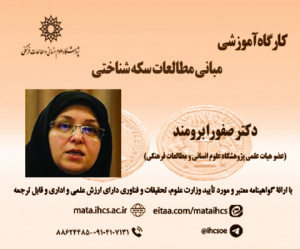بررسی مؤلفه های کلامی و فلسفی آفرینش و صدور از دیدگاه ابن سینا (مقاله علمی وزارت علوم)
درجه علمی: نشریه علمی (وزارت علوم)
آرشیو
چکیده
تبیین نحوه آفرینش و صدور کثرت از مبدأ هستی و رابطه کثرت و وحدت، از دغدغه های متکلمان و نیز یکی از چالشی ترین مباحث میان مکاتب فلسفی مشاء، اشراق، و حکمت متعالیه است و هر مکتبی تفسیر و تبیین متفاوتی از آن ارائه کرده است. همه این مکاتب در پذیرش و باور اصل واقعیت و وجود با یکدیگر هم داستان اند، اما در نحوه صدور کثرت و نسبت آن با نظریه دینی آفرینش، اختلاف نظرهایی وجود دارد. پرسش اصلی این تحقیق این است که مؤلفه های کلامی و فلسفی آفرینش از دیدگاه ابن سینا چیست و نظریه صدور کثرت از وحدت فلسفی چه نسبتی با نظریه دینی آفرینش در دیدگاه ابن سینا دارد؟ این پژوهش که با روش توصیفی تحلیلی سامان یافته، ترسیم تلاش های ابن سینا در تبیین صحیح آفرینش و نظام صدور و ارائه جهان شناسی برآمده از دیدگاه وی را هدف قرار داده و بر این فرض استوار است که آفرینش و صدور در اندیشه ابن سینا، برخاسته از مبانی نظام فلسفی مشاء است، در عین حال صبغه کلامی گرفته و متأثر از آموزه های دینی در باب خلقت است و از این جهت، متمایز از دیدگاه ارسطو و افلوطین است. ابن سینا ارتباط حقایق عینی و وجودی با حضرت حق تعالی را با کلیدواژه های صفات الهی و علیت تبیین کرده است. او با قائل بودن به اصل آفرینش بر اساس صفات الهی و اصل علیت و بر پایه قاعده الواحد، صادر اول را عقل اول و مجرای کثرات می داند و خصوصیات کلامی خلقت، مانند فاعل بودن و مختار بودن علت، را در این صدور و آفرینش داخل می داند.Examination of the Theological and Philosophical Components of Creation and Emanation from Ibn Sina’s Perspective
The process of creation and the emanation of multiplicity from the Source of Existence, along with the relationship between unity and multiplicity, has been a central concern for theologians and a complex debate among the Mashshāʾī (Peripatetic), Ishrāqī (Illuminationist), and Ḥikmat al-Mutaʿāliyah (Transcendent Theosophy) schools. While all these schools acknowledge the reality of the Source, they differ in explaining how multiplicity emerges and its connection to the religious concept of creation. This research explores the theological and philosophical components of creation in Ibn Sīnā’s thought and examines how his theory of the emanation of multiplicity from unity aligns with the religious theory of creation. Using a descriptive-analytical method, the study aims to clarify Ibn Sīnā’s understanding of creation and emanation, presenting a cosmology rooted in his perspective. It is based on the hypothesis that his view of creation and emanation originates from the foundations of Mashshāʾī philosophy while also incorporating theological dimensions influenced by religious teachings on creation. This distinguishes his view from those of Aristotle and Plotinus. Ibn Sīnā explains the relationship between objective and existential truths and the Truth (Ḥaqq Taʿālā) using key concepts such as divine attributes (ṣifāt ilāhiyyah) and causality (ʿilliyyah). The aim of this research is to explore Ibn Sīnā’s system of creation and emanation, highlighting the cosmology that emerges from his perspective. By affirming creation through divine attributes, causality, and the principle of al-Wāḥid (the One), Ibn Sīnā identifies the First Emanated (al-Ṣādir al-Awwal) as the First Intellect (al-ʿAql al-Awwal) and the source of multiplicities. He also incorporates the agentive and volitional nature of the cause into the emanation process.







